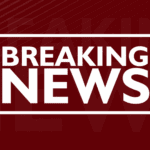The Indian Railways’ Clone Train Scheme is meant to benefit passengers and also aid migrant workers who wish to return to urban areas to work. Some routes face a shortfall of berths due to high demand.
As Unlock 4.0 has allowed more and more activities, the number of travellers opting to take the services of the Indian Railways is increasing too. The IR, in a bid to provide relief to the waitlisted passengers, has declared that the organisation may run special ‘clone train’ in the routes which generally see high passenger traffic.
Railway Board chairman VK Yadav said at the media briefing,”Railways will monitor all the trains that are currently in operation to determine which trains have a long waiting list. Wherever there is a demand for a particular train, wherever the waiting list is long, we will run a clone train ahead of the actual train, so that passengers can travel.”
These clone trains will begin plying in a phased manner in the next 15 days and the Indian Railways will issue a notification about the same. Here are all things you must know about the Clone Train Scheme.
A clone train will be a train which will be running with the same number as the actual train. For example, if train number 02156 Bhopal Express plying between Hazrat Nizamuddin and Habibganj gets fully booked and still witnesses a heavy demand of waitlisted passengers, the Indian Railways will add another rake of the Bhopal Express with the same number just to carry the waitlisted ticket-holders.
The stoppages of the clone trains will be less than the special trains. The idea is to have stoppages at major stations for clone trains to meet the demands of people. So this clone train will not stop at all the decided halts of the original and will carry rakes only pertaining to bookings for those key major stations.
The waitlisted passengers will be informed about their berths in the clone train soon after the reservation charts for the originally scheduled trains are drawn up four hours before departure.
The clone trains will be primarily 3AC trains and run ahead of the already operating special trains.
Also Read: Haryanvi Song: Sapna Chaudhary shares her new song on Insta, fans said – top class
Assets being kept idle causes losses to the Indian Railways, yet this project cannot be run off the cuff as some preparation will be required. For example, the IR will require to upgrade its Passenger Reservation System(PRS) that is programmed to disable bookings of the train ticket after a waiting list for a train touches 400 in sleeper class, 300 in 3AC or chair car, 30 in first class and 100 in second class.
The Railways will also have to brace for a logistical challenge as it will require additional rakes for running the clone train. Therefore, it will try to run these type of trains from major cities initially where there already are additional rakes.
Apart from these clone trains, the earlier option of ‘Vikalp Scheme’ continues where the passengers are given choice to book the ticket in an alternate train if their waitlisted tickets do not get confirmed on the train they had opted for.
The advantage the Clone Train Scheme has over the Vikalp scheme is that the latter has a major drawback that the travelling time of the passenger may increase if he/she is given reservation in another train. In the Clone scheme, it does not increase and may likely be shortened as well.
You will know when the final date for operation of clone trains is finalised as the same will be widely publicized for the benefit of prospective passengers. The routes are being finalized, say the Indian Railway authorities.
The likely date of operations could be merely 15 days away. But remember, one cannot board these clone trains on a current ticket. Only waitlisted passengers will be accommodated on a ‘clone’ train.
Indian railways had suspended all passenger trains due to the imposition of a nationwide lockdown from March 25 and restarted it at a much lower frequency and only in a phased manner. The Indian Railways on September 5 also announced that it will operate 80 more special trains from September 12 in addition to the already 230 plying trains.


